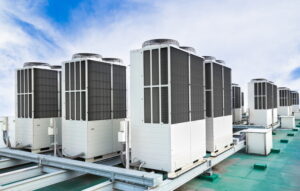
You need new cooling/heating for your commercial business. How many tons of heating and cooling does your facility require for proper climate control?
“Wait a minute … tons of cooling? That doesn’t sound right. How can heating and cooling be measured as tons?”
We know that this sounds odd when first hearing it. If you don’t work in commercial heating, ventilation, air conditioning, and refrigeration, the idea of “tons” when it comes to heating and cooling has a bizarre ring to it. And no, it doesn’t have anything to do with the weight of the HVAC equipment. But knowing the proper “tonnage” of your commercial HVAC in Covington, LA is essential for getting new equipment that does what you need from it without wasting energy.
Follow us below as we explain tonnage for people who don’t work in HVAC.
The ton is a measure of heat
How much cooling or heating any HVAC device can deliver is measured in terms of heat: either the amount added to a space (heating) or the amount removed from a space (cooling). This is why you’ll see an air conditioner’s cooling capacity listed as a unit of heat—it’s the amount of heat the AC can pump out of a room in an hour.
The standard unit of heat used in the HVAC industry is the British Thermal Unit (BTU). This is the amount of heat necessary to change the temperature of a pound of water by 1°F. To give you a sense of how this works in HVAC, the average window AC removes 5,000 BTUs of heat from a space per hour.
Because BTUs are small units of heat, the numbers quickly turn unwieldy when dealing with HVAC equipment larger than a window AC. For example, a standard commercial unit can move 600,000 BTUs per hour, and an industrial unit may move 1.2 million BTUs an hour. Making measurements more convenient requires a larger unit. And that’s where the ton comes in. A ton equals 12,000 BTUs. So a commercial unit that can move 600,000 BTUs per hour is a 50-ton unit, and 50 tons is called the unit’s tonnage.
Why it’s called a ton
Since heating and cooling don’t weigh anything, why call 12,000 BTUs a “ton”? The answer is that it’s the amount of heat necessary to melt one ton of ice at 32°F in 24 hours. This is the measurement as standardized by the American Society of Heating, Refrigerating and Air-Conditioning Engineers (ASHRAE).
Finding proper tonnage
Residential heat pumps are from 1 to 5 tons. Up to 25 tons is light commercial, and over that is heavy commercial and industrial. How much tonnage does your facility need? It’s important to get this right because too little and you won’t have the climate control necessary, and too much and the HVAC system will waste huge amounts of power and wear down fast.
It’s easy to find the right answer—work with the pros! When you call us for a new commercial HVAC installation, we’ll analyze your space and find the right tonnage to match it.
Gowland’s Heating & A/C believes in “Relationship over revenue!” Trust us with your commercial HVAC installation and other services in New Orleans and the Surrounding Areas.

